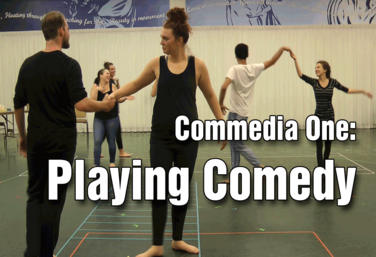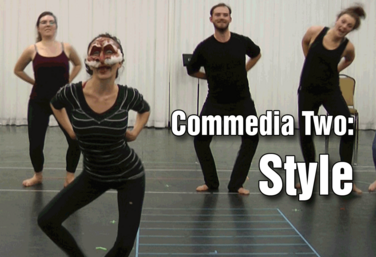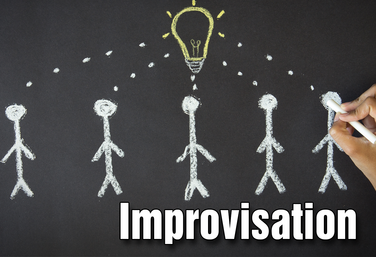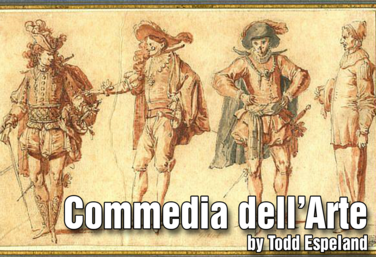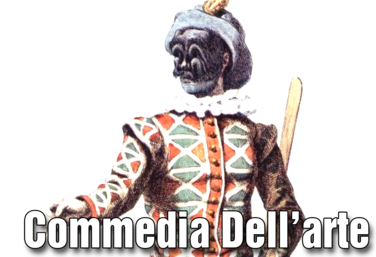Items tagged "Commedia"
2 Courses, 3 Units, 2 Lesson Plans, and 5 Resources tagged "Commedia" for Drama Teachers.
Courses
Commedia I: Playing Comedy
by Todd Espeland
Commedia dell’arte is a 16th Century masked acting form. It’s the basis of all comedy and it’s a form that many teachers want to include in their curriculum.
Instructor Todd Espeland has designed two courses that work hand-in-hand with teaching this fantastic physical form.
In Commedia I: Playing Comedy - Todd teaches the principles of comedy through four key elements: status, appetite, swing, and intention/invention. This course provides an excellent foundation upon which to explore Commedia to its fullest. Includes bonus videos, handouts, reflections, and exit slip question ideas for each lesson.
Read More...
Read Less...
Commedia II: Style
by Todd Espeland
Commedia dell’arte is a 16th Century masked acting form. It’s the basis of all comedy and it’s a form that many teachers want to include in their curriculum.
Instructor Todd Espeland has designed two courses that work hand-in-hand with teaching this fantastic physical form.
In Commedia II: Style - Todd moves on to the specific style of Commedia dell’arte. This includes a history of commedia, the stock characters and how to physicalize them, sample lazzi and a capstone assignment. The course includes video demonstrations so you can see the exercises and activities in action.
Read More...
Read Less...
Units
Improvisation
by Karen Loftus
Students sharpen their listening and reaction skills through improv games, exercises, and scenes. They will learn five specific guidelines to apply to their improvisation: accept the offer, bring information to the scene, make active choices, make your partner look good, and don’t force the humour.
There are so many different ways to approach a unit on improvisation. Keep in mind that you will have students who are really excited about this unit and some students who dread it. It’s best to start with low-risk games and exercises and then build up to higher-risk ones. Low-risk games in this situation mean partnered interactions that aren’t shared with the whole class.
Read More...
Read Less...
Commedia dell'Arte
by Todd Espeland
Commedia dell’arte is a 16th century masked acting form. It is the basis of all comedy, including all tv sitcoms. This form is characterized by masked types and archetypical characters and a specific way of playing comedy. To that end, this unit is divided into two parts.
Part One focuses on the foundations of commedia - playing comedy. These principles will be important to learn when it comes to developing commedia characters, specifically the physicality of the characters. Part Two will cover lazzi.
Note: there are links to video demos in many of the lessons of this unit.
Read More...
Read Less...
Unit 4: Commedia Dell'Arte
by Drama Teacher Academy
We take a side trip to Italy to discover a secular comedic form: Commedia Dell’arte.
Students will be introduced to the form, explore the characters and themes, and put their knowledge to practical application by creating a commedia character.
Read More...
Read Less...
Lesson Plans
Introduction to Commedia Dell'Arte
by Lindsay Price
Perfect for an Emergency Lesson Plan. Students will read and respond to a Commedia Dell’Arte Handout. They will then reflect on what it would be like to have been a Commedia actor, the similarities and differences between Commedia and modern acting, and which type of acting they would prefer.
Read More...
Read Less...
Commedia dell'arte: High Status and Low Status
by Todd Espeland
When we think of Commedia dell’arte, we often think “mask.” But before we get to mask, it’s important to establish the foundation. Knowing the technical elements of playing comedy are essential before adding on the layers of mask, archetypal characters, and Lazzi. This lesson plan looks at one of the cornerstone tools for playing comedy: status. Status is at the heart of Commedia dell’arte. Students will explore high and low status through the game called Status Walks.
Read More...
Read Less...
Resources
The Comedy Cornerstones for Commedia
A guide to the four necessary comedic tools for playing Commedia dell’arte: status, appetite, swing, and intention/invention.
Read More...
Read Less...
What is Lazzi?
Lazzi is a comic bit or piece of comic shtick based on character. In this handout, students learn where to start with Lazzi, with examples of Commedia characters and how they perform Lazzi.
Read More...
Read Less...
High and Low Status
One of the ways that we can learn about status is by physically playing status in the body. Use these descriptions to physicalize high/low status with your students in the Status Walks Game.
Read More...
Read Less...
Commedia Stock Characters
Use this handy chart to review Commedia stock characters and their descriptions.
Read More...
Read Less...
Commedia Exercise: Opposite Day
This exercise helps to demonstrate the concept of status, and how the status of a character affects how they act and how they treat others.
Read More...
Read Less...
© Copyright 2015-2025 Theatrefolk
